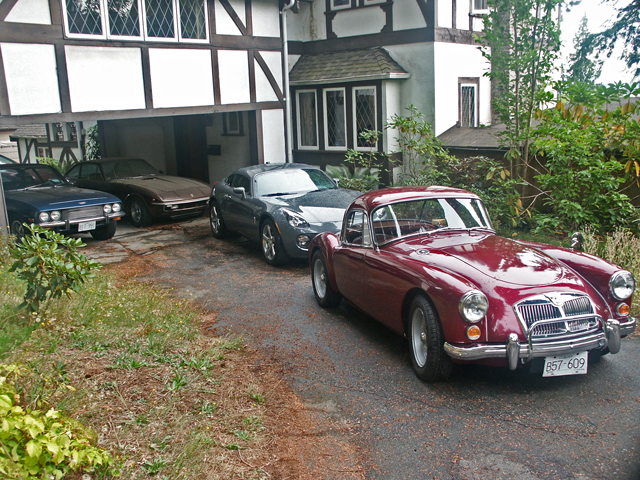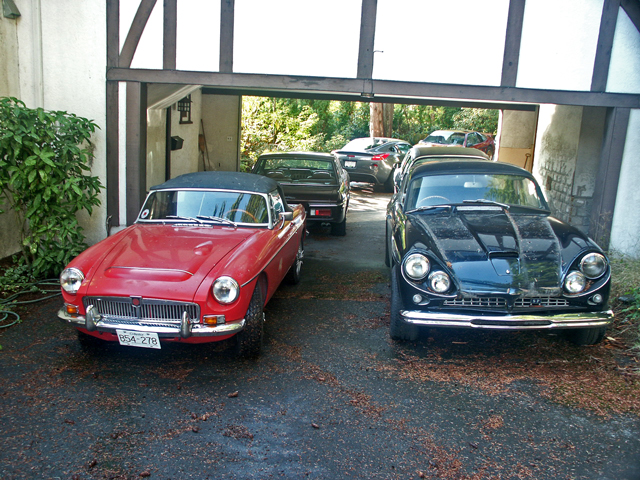One-of-one parts? A limited aftermarket? Little-to-no documentation? Yeah, I can see how both can be very similar. ![]()


Solid structure? Period-correctness? Noteworthy provenance? Yes, these are just three of the many things that help the value of both classic cars and historic homes. Let me explain.
Like you, I have a thing for classic cars, but I also love old buildings. I blame Norm Abram, Steve Thomas (Bob Vila was before my time) and Tom Silva–folks I grew up watching on “This Old House.”
Seeing them restore old homes on Saturday afternoons while I ate pizza is one of my favorite childhood memories. I grew up in houses built during the 1940s to 1950s, but the even older homes captivated me. Victorians? Colonials? Neoclassicals? Yes, more please.
Like old cars, each historic home tells a story. One of my homes has incredible mantels. Why? It was built new for the foreman of the local mantel-building company.
Things also get added on, deleted and customized, revealing a bit about that owner’s circumstances and preferences. Unlike with cars, highly original examples of houses are nearly nonexistent. (Would you really want to live in a house with no electricity or running water?)
What adds to a historic home is quite similar to what adds to a classic car. The first thing I look for is how solid the structure is. Foundation work is expensive, and so is any sort of down-to-the-frame restoration. If the home has a good structure but is a little rough around the edges, most likely that’s an easier and probably much cheaper fix.
Another factor is period-correctness. Did I just contradict myself? Didn’t I say an all-original home is “nearly nonexistent,” let alone not realistic?
No one is going to ding you for indoor plumbing and updated electricity, especially if it looks in the spirit of that style of house. Got a Victorian? Plumbing and electrical fixtures should look a bit ornate and over-the-top. Got a craftsman? Embrace natural materials. Mid-century modern? Keep clean lines and a minimalist vibe.
Admittedly, period-correctness applies much more to the exterior presentation. For example, a Victorian should have gingerbread, and it shouldn’t be painted just millennial gray. (Nothing should be painted millennial gray, but that’s another story.)
Provenance can also add to a home. Who wouldn’t want to live in a home once lived in by someone noteworthy? (Unless, of course, that famous person murdered an entire family there, but minor detail.)
The architect behind the house can add, too, just as much as the designer of a car. Would you turn down a car penned by Friedrich Geiger (Mercedes-Benz 300 SL), Giorgetto Giugiaro (DMC DeLorean) or Malcolm Sayer (Jaguar E-type)?
Likewise, there are some well-known architects, such as Frank Lloyd Wright, to lesser-known architects with fame within the historic home community, such as George Franklin Barber.
I just bought a Barber, and that factored quite a bit into my decision. (As an aside, this Frua Fiat caught my eye, too, because of its designer and its estimated value.)
Now, as with classic cars, historic homes are not for everybody. Perfect does not exist in an old house–and don’t you dare break out a level to verify that.
While salt is the enemy of cars (and the resulting rust), water is the enemy of homes, especially wooden ones (rot, mold and termites are real issues). Plaster walls require different care than those constructed out of drywall.
And most importantly, there’s almost always something to improve on, as with a classic car. But if you can put up with those things, you’ll fall in love with the charm. After all, they don’t make them like they used to.
One-of-one parts? A limited aftermarket? Little-to-no documentation? Yeah, I can see how both can be very similar. ![]()
Colin Wood said:One-of-one parts? A limited aftermarket? Little-to-no documentation? Yeah, I can see how both can be very similar.
One-of-one parts: See windows and doors. ![]()
Limited aftermarket: Indeed! See leaded glass or carpentry work.
Little-to-no documentation: Yes! In fact, many homes where I live are listed as "1910" with the local government if they are 1910 or older. It requires some research to get a better date.
Our first home was a 100+ year old sorta-farmhouse in town. It was a fixer-upper. After that experience, I decided I could choose: cars, or old house restoration. I chose the former. My current home requires no exterior painting, the heat actually heats and there isn't any asbestos floating around.
Old houses are kind of like old Rolls-Royces or exotic Italian cars: nice to look at, but someone else can own them and pay to fix them.
I've remodeled most of my parents house which was built in 1862! It's HUGE and the design is called a "plank house" due to the exterior sheathing made of vertical wide boards. Let's just say that it's "interesting" to work on.
I can totally relate to this subject. My first house was a 1936 Sears Roebuck kit house I bought from the original owner while driving a '69 Spriget fresh after college graduation. House number two was 1907 craftmans style home I resorted top to bottom while moving up to a '65 Austin Healey 3000 MK III. Third and current house, a 1927 mediterranean which I had a gargage/race shop designed and built to match to maintain my '57 Austin Healey 100-6MM vintage racer # 414.
https://www.flickr.com/photos/27357414@N02/albums/72157662148350842/



In reply to dougie :
Wow. Love the Mediterranean style home! The car looks good in front of it! The garage's exterior matches the house well, too.
Pseudo-Tudor home built in the 1930s, with lots of old cars (at that point I also had two others in the garage).


Displaying 1-9 of 9 commentsView all comments on the CMS forums
You'll need to log in to post.